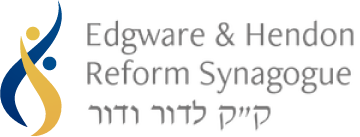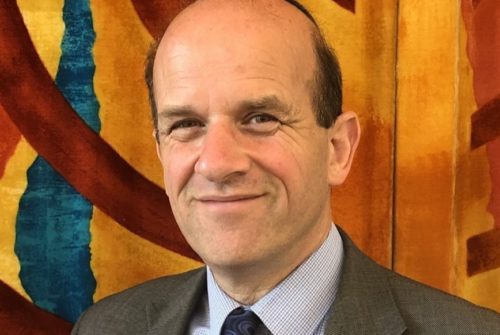For a long time, the only information I got from my children about their school day was what they had for lunch. Reviews were mixed. But somewhere around year 2 or 3, there were a small number of instances of meanness at school that we couldn’t leave unaddressed, and the response of the teacher blew me away in it’s simplicity and wisdom. She took a piece of paper, like this one, and began to say mean things to it. As she did, she slowly crumpled it up into a ball. She then asked the children how they might fix the hurt that so many mean words had caused, and of course many of them suggested apologising to the paper. As she apologised to the paper, she began to unfurl the crinkles, before fully opening it our and asking – ‘is it better now’? It was very clear to the 6 and 7 year olds that no, the paper would never be completely flat and fresh again.
For some reason that crumpled paper has been on my mind a lot lately. Perhaps because I myself feel so crumpled from the year we have just said goodbye to. Perhaps it is just such a perfect example of what it means to walk through life, always carrying the experiences we have walked through, recovering in a variety of ways, but still creased from them, never quite the same. This year has been collectively and individually brutal, and it feels as if life is irrevocably changed in too many ways to even see them all right now. I’m not even sure if we can begin to un-crinckle the paper while we remain in the midst of so much ongoing trauma and anguish. Having said that, I’ve spoken to a number of people over the last week who have mentioned a sense of dissociation, one of 4 trauma responses Rabbi Tirzah Firestone discusses in her book ‘Wounds into Wisdom’. Unable to continually sit with the pain, some Israeli’s and Jews from around the world have found themselves splitting off or numbing themselves ‘in the face of experiences that are too overwhelming to assimilate’[1]. And of course ours is not the only trauma in this ongoing conflict. The trauma will not end on the day the conflict does.
And war and violence are not the only traumas you will be carrying this year. We all arrive here, to bring in the new year, carrying our own individual burdens and sorrows. The need for renewal is very real.
Dissociation hasn’t been the only response to brokenness this year, and I was really touched by a story that came out of the Hecht museum in Haifa. Back in August, a three and a half thousand year old Bronze age pot, remarkable for its completeness, was accidentally knocked over and smashed by Ariel Geller, a 4 year old visitor to the museum. It had been on display for 35 years without glass, with curators feeling there was a ‘special charm’ to having it on show without obstruction[2]. The museum had a lot of options at its disposal – they could have sued the family, they could have permanently excluded them from visiting, or found some other form of punishment in response to their precious broken pot. What they did instead was invite the family to join them at a workshop to learn about how ancient artifacts are repaired, and allowed Ariel to help stick a pot back together (though not the one he broke). He also presented the museum with a clay pot he had himself made, as a 4 year old’s way of trying to make amends. Inbal Rivlin, the director of the museum, said she wanted to use the restoration as an educational opportunity and to make sure the Gellers felt welcome to return[3]. This felt like such a beautiful response to brokenness. The jar will never be as it was before, indeed 4 year old Ariel is now an indelible part of the pots story. And vice versa, the pot is now a part of his story too.
Judaism offers us another image of a broken pot, in the philosophies of the Kabbalist Isaac Luria[4], whose grave you can still visit in the Northern Israeli town of Tzfat. Lurianic Kabbalah describes a catastrophic event that took place during creation. Without diverting too far off course into the mystical teaching, the basic idea is that during creation, vessels designed to contain the primordial light of the various emanations of the one true God were unable to contain this pure light, and shattered, with most of the light returning to its divine source, and the rest scattering throughout creation. It is from here that the phrase Tikkun Olam comes – the idea that repair of the world is core to Judaism. In its origins it asks us to return these shards of light to their divine source, which we do by consciously performing mitzvot and doing good in the world. There is still so much to do! Perhaps these high holidays ask us to consider which shard we are going to grab in the coming year, returning it’s divine light to the source, and bringing us all closer to a healed world.
Some of you might be familiar with the Japanese art of kintsugi. It translates literally as ‘joining with gold’ and is a beautiful way of repairing pottery. The pieces are brought back together with urushi lacquer[5] and powdered gold, silver or platinum. The item is now not only usable again, but the joins become a beautiful testimony to the break that happened. They are never again as they were, like our paper, but they are whole again. We are each broken in our own unique, special ways. But we are also whole.
There is a quote found in our funeral prayer books from Rabbi Menachem Mendel of Kotzk[6] who said ‘there is nothing as whole as a broken heart’. There have been times I’ve read that line and realised I am baffled by it. At other times it makes total sense that only in the brokenness can we become more whole. Perhaps the late singer and poet Leonard Cohen had the answer in his famous line ‘ring the bells that still can ring, forget your perfect offering, there is a crack in everything, that’s how the light gets in’[7]. Cohen rarely explained his music or his lyrics, but in 1992, he apparently explained this line with the following, which sounds a little like his own high holiday sermon:
“The future is no excuse for an abdication of your own personal responsibilities towards yourself and your job and your love. “Ring the bells that still can ring”: they’re few and far between but you can find them.
This situation does not admit a solution of perfection. This is not the place where you make things perfect, neither in your marriage, nor in your work, nor anything, nor your love of God, nor your love of family or country. The thing is imperfect.
And worse, there is a crack in everything that you can put together: Physical objects, mental objects, constructions of any kind. But that’s where the light gets in, and that’s where the resurrection is and that’s where the return, that’s where the repentance is. It is with the confrontation, with the brokenness of things.”[8]
The scrunched up paper flattened out, the broken pot repaired with gold, they will never return to what they were, but they continue. The paper is perhaps more valuable crinkled than flat, it was in teaching us such a powerful message. The bowl is beautiful in new and unique ways. We cannot undo that which is done. We cannot unbreak our brokenness, but we do heal, and we can find new ways to be whole alongside it. This season is designed to help us reflect on what and where we have been broken or caused brokenness in the last year, acknowledging so that we can move forward in the year to come.
Perfection, is not the goal. Something can be whole and broken at the same time. I know I am, and I know I am imperfect. I know I have at times failed you this year, and I have at times failed myself. But I also know that within the ‘us’ I have found incredible hope and support. That first shabbat after what Israeli’s now call ‘Black Shabbat’ I will never forget what it was like to look out across our community from this bimah, and even though we were celebrating a Bar Mitzvah, everyone in the congregation at some time or another was able to cry. We came together with our wholeness, and our brokenness, and we held each other through the pain and the fear. The last year has fractured us individually and communally, and sometimes it is hard to see who or what will put us together again. What will be the gold lustre that fills in our cracks and our wounds? For me, when the answer isn’t chocolate, carbs, or musicals, it is almost always community. We come together with all our broken parts and hearts, and we know that the world will keep turning, even when ours feels that it has been turned upside down.
May this new year that is dawning be one in which our broken pieces are held together in ways that make the world more beautiful, compassionate and whole. May the coming weeks bring peace, healing and wholeness for us all as individuals, as a community, and for the whole world. Cain Yehi Ratzon, venomar, Amen
[1] Firestone, sic, p.37
[2] https://www.bbc.co.uk/news/articles/ckg2j2y20epo
[3] https://edition.cnn.com/2024/09/02/style/israel-haifa-museum-boy-broken-jar-returns-intl-hnk/index.html
[4] c. 1534– July 25, 1572
[5] No I don’t know what it is either
[6] 1787-1859
[7] From ‘Anthem’
[8] Leonard Cohen’s “Anthem”: The story of the line, “There is a crack in everything, that’s how the light gets in” (qz.com)


